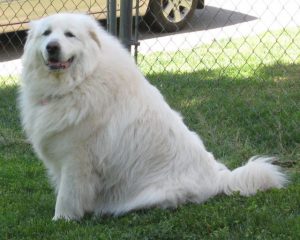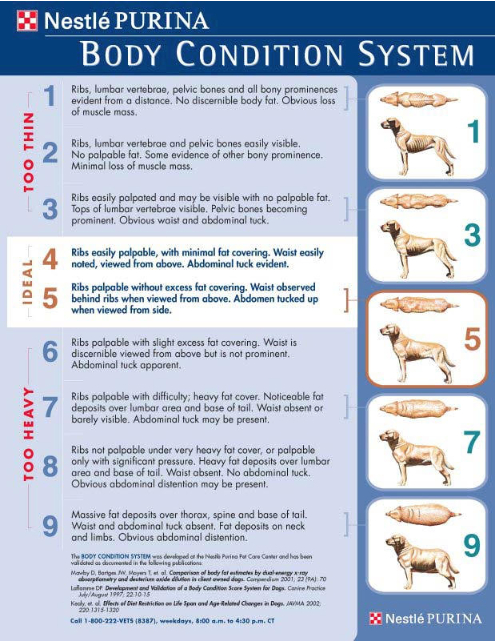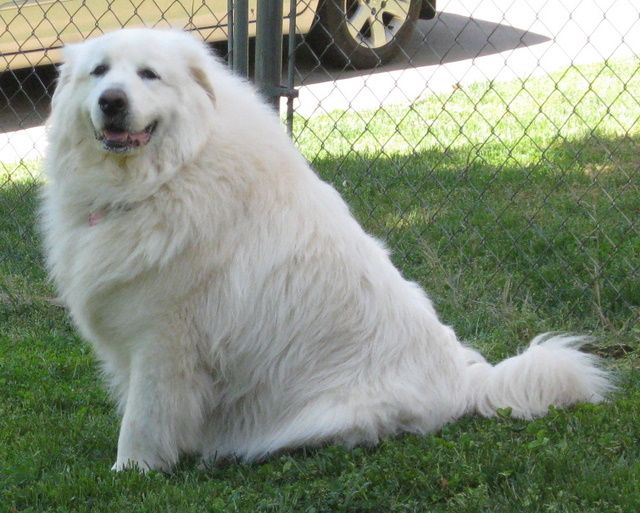
Feeding Your Puppy to Maximize Health and Avoid Health Issues
Feeding your puppy to maximize health and avoid health issues is our most viewed blog article. We will buy just about any product that companies market to combat health issues. We all want the best for our children and our pets. Our pets need to be at peak health to fulfill whatever role they may have in your home. Sadly, many large breed dog owners get this wrong. One study found that 29% of all veterinarian visits were because of degenerative joint disease of the hips.1

Diet is the focus of today’s blog. Obesity is your puppy or dog’s number one enemy. This can lead to:
Osteoarthritis, especially in the hip
High blood pressure
Orthopedic problems, cranial cruciate ligament injuries
Skin disease
Heart and Respiratory Disease
Decreased life expectancy (up to 2.5 years)2
53% of all dogs in the United States are overweight.2 It doesn’t matter whether you feed raw, canned, or kibble. Too much food consumption increases weight in the form of fat which constantly strains their musculoskeletal system and is especially damaging to large and giant breed dogs.
Think of fat as a gas tank. My Chevy Suburban doesn’t need a 75-gallon tank. It has a 31-gallon gas tank and I get on average 20 miles per gallon. That gives me 620 miles of range. That’s 8-10 hours of driving time, which is totally acceptable. When you add more size, you add more weight. This reduces gas mileage and makes the suspension less comfortable.
Obesity in dogs will reduce the lifespan of a healthy joint and make your puppy or dog less comfortable. Click here to see this video of an obese dog. Great Pyrenees will go from 1 pound at birth to approximately 80-140 pounds first 1-2 years of life. That rapid growth combined with obesity will end up over-stressing immature ligaments and joints and lead to early-onset joint degeneration or even hip dysplasia as early as 6-9 months old. It will also set in to play a host of metabolic issues detrimental to growth.
Stop feeding your puppy or dog so much food. Feed them highly nutritious food on a schedule. Please see my previous blog Feeding Your Great Pyrenees Puppy. This will save you money on dog food, reduce your veterinary bills, and improve your puppy’s health for a lifetime. This may be the first time that not selling you something will give you more.
Lust et al3 said this “Excess energy consumption increases the frequency and severity of hip dysplasia in genetically predisposed dogs. Food intake should be regulated to maintain a slender figure with the ribs and dorsal vertebral spines easily palpable, but not visible. Excess dietary calcium and vitamin D contribute to hip dysplasia in genetically predisposed individuals and should be avoided. High dose vitamin C supplementation in growing puppies does not prevent hip dysplasia, and this practice should be discontinued.” Reduce the food ration if you can’t feel the ribs of your puppy. Stick to high-quality dog food alone and avoid supplements for your puppy.
Dammrich4 states “Overnutrition in dogs from the larger breeds exaggerates this tendency to create osteopenia by increasing the rates of skeletal growth and remodeling of the newly formed cancellous bone.” Overfeeding causes the bone to be less dense and predispose them to injury. Therefore, do all puppy feeding in a controlled manner 2-3 times per day for 15-30 minutes, followed by removal of food until the full size is attained.
Interestingly, restricted feeding was associated with slower growth and delayed growth plate closure in large breed puppies without reducing their adult full size.5 Delayed growth to reduce skeletal injury is what we are trying to do in large breeds. Some people feel that restricting food will create a mini version of what the puppy would have been. This is not the case. Restricted feeding slows their growth in a healthy natural way similar to what a canine would grow like in the wild. I’ve seen many coyotes and a few wolves. All of them were thin.
Pat yourself on the back the next time you see that your puppy isn’t as big as someone bragging on Facebook. A Great Pyrenees puppy that is Goliath at 6 months old is nothing to be excited about. Slow and steady will make your puppy healthier.
Up North Pyrenees raises high-quality puppies one litter at a time. We educate and support our families for a lifetime. Please consider us for your next puppy. We’re worth the wait!
References:
- Richardson DC: Review of Orthopedic Case Records. Raleigh, NC, North Carolina State University College of Veterinary Medicine, 1985-1990.
- Fat Dogs & Dog Obesity: How to Help Your Dog Lose Weight. (2020). Retrieved 4 November 2020, from https://www.akc.org/expert-advice/health/fat-dogs-and-dog-obesity/
- Fries CL, Remedios AM. The pathogenesis and diagnosis of canine hip dysplasia: a review. Can Vet J. 1995 Aug; 36(8): 494–502.
- Dämmrich K. Relationship between nutrition and bone growth in large and giant dogs. J Nutr. 1991 Nov;121(11 Suppl):S114–S121.
- Richardson DR. The Role of Nutrition in Canine Hip Dysplasia. Veterinary Clinics of North America: Small Animal Practice. 1992 May; 3(22): 529-540.

